By Hom and Poe Htoo.*
Don Chai village is located in northern Thailand, in Phrae province, where the Kaeng Sua Ten Dam is proposed to be constructed. Currently, the Yom flows freely between two lush mountains filled with rich ecosystems as well as a huge golden teak timber forest. The proposed dam would block the mainstream of the Yom River, which the Don Chai community relies on for their survival. The Yom River and her 77 tributaries feed thousands – not only human beings but many different animals.
The golden teak forest in the community, the Yom River, and the spirits they believe in give the community strength, unity, and inspire them to fight against the dams. They write on the walls of their house and their fence that they are not going to move. And their spirit of fighting against the dam project will never die.
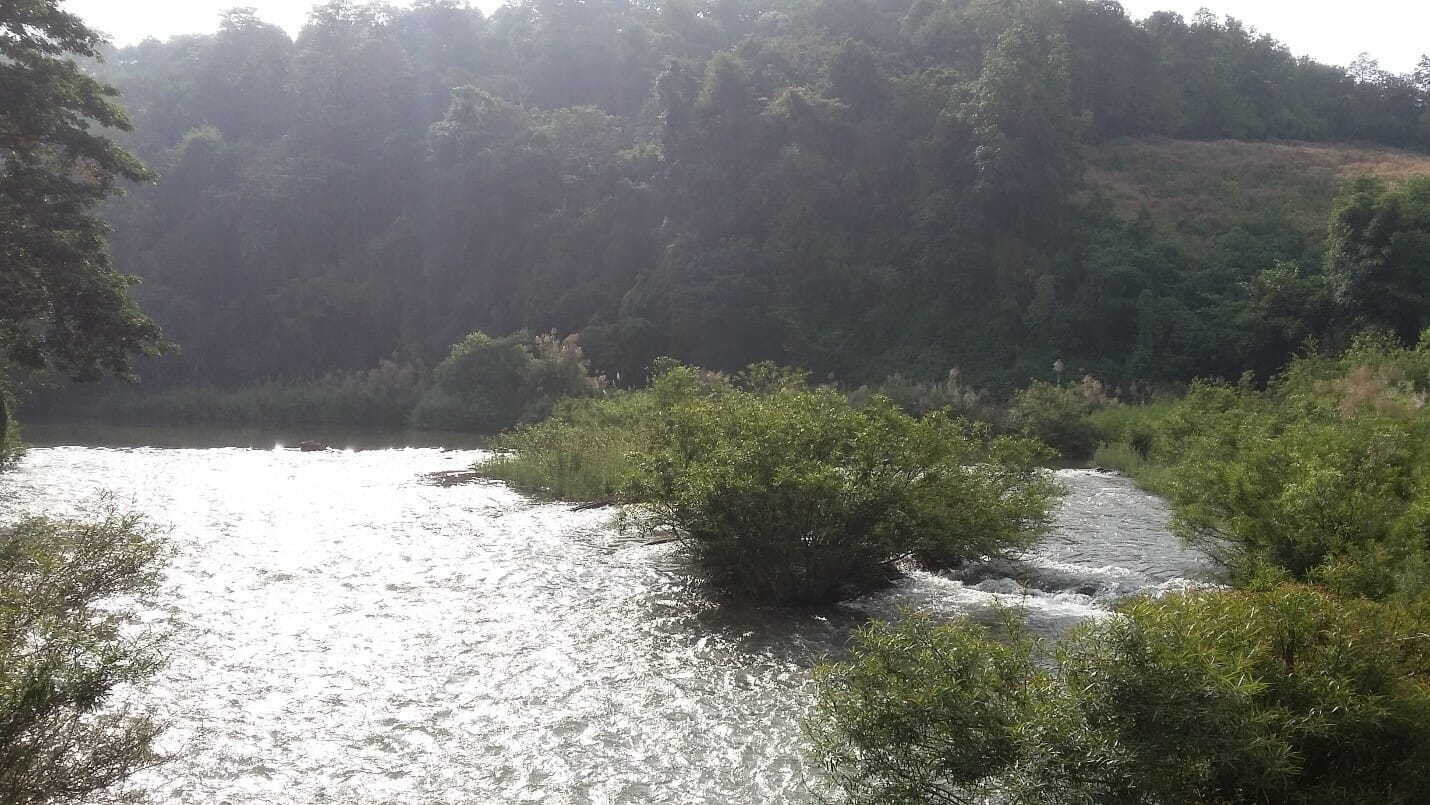
The free flowing Yom River near Don Chai village in Phrae Province, Thailand. (Photo by Chanh)
The Don Chai Community and Kaeng Sua Ten
People in Don Chai village depend on nature for their life; the most common occupations in the community are agriculture, fishing and making local alcohol. The place offers relaxing and interesting areas for urban visitors to learn about a different way of life. The Don Chai community strongly believes in the spirits, they have a lot of local knowledge and know the value of their environment. In addition, they have a strong heart and are committed to protecting their homeland. Actually, they have a long history of using many strategies to try to conserve their community and green
Because of the proposed the Kaeng Sua Ten Dam, Don Chai village is also well-known as the Kaeng Sua Ten community. The dam was first proposed by the Thai Government in 1991. The community organized strong protests and opposition to the dam, and the government had to cancel the project. Later the government proposed the upper and lower Yom dam projects instead of the Kaeng Sua Ten Dam, and today the names of the projects planned for the Yom River are always changing.
The goal of building a dam on the Yom River is to reduce the floods in Bangkok and prevent natural disasters from occurring. But if the project is initiated, many harms will come to the Yom River communities: many villages will be submerged, villagers will face hardship or poverty more than they have before, and it will be very destructive to the environment.
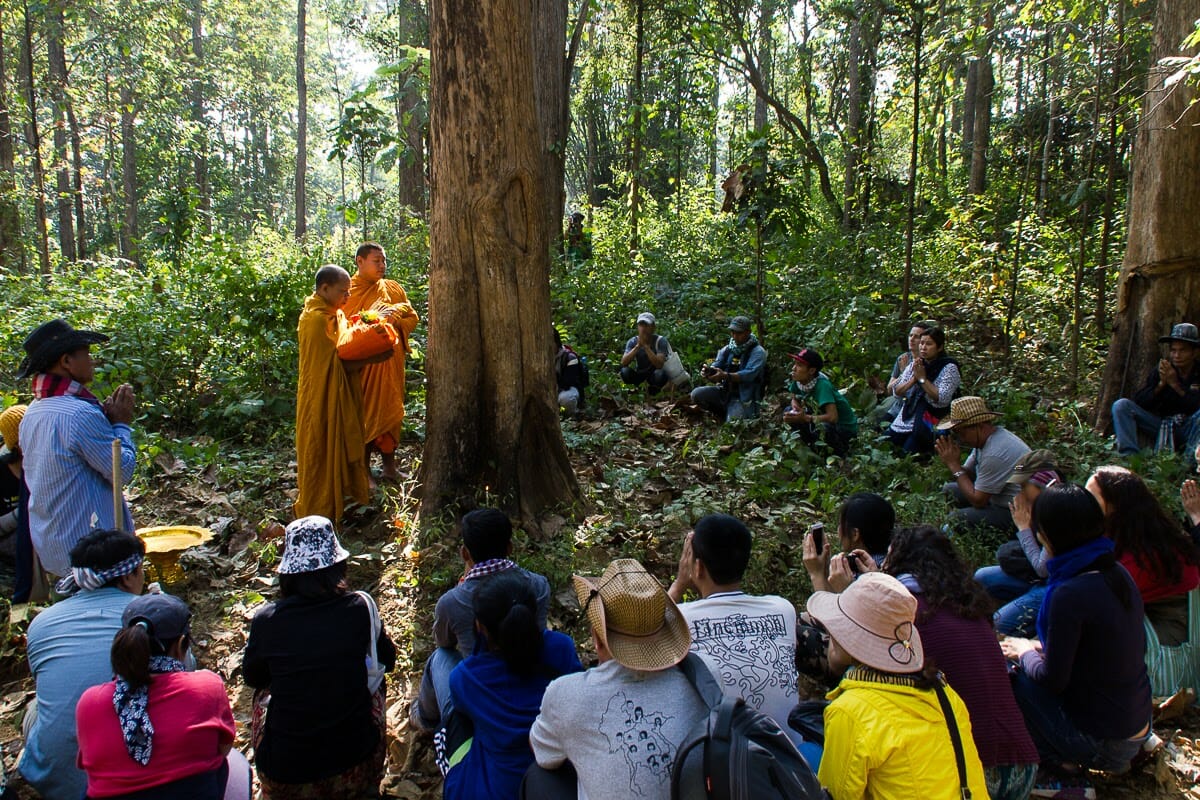
The Don Chai community campaigns against dams using religious tree ordinations to prevent harm from outside and protect the community’s forest.
A Spirited Defense of Earth Rights
Communities in Kaeng Sua Ten area are using both “soft” and “hard” strategies to fight against dam projects. Villagers in Kaeng Sua Ten communities believe strongly in spirits, just like many people in Thailand do, and they use spirits as a strategy to fight against dams. For example, they pray to the spirits to protect them and to guide them before they do any dam-related activity. Afterwards, they come back to the spirit house and thank the spirit for listening to their prayers. These communities believe that they were able to fight against the dam projects for many years because the spirits were with them.
The community members also do tree ordination ceremonies, in which a monk blesses a tree by praying and tying a robe around it, as a strategy to fight against dams. The Kaeng Sua Ten communities believe that people cannot cut a tree anymore after the tree is ordinated, and they do tree ordination many times per year. They believe that their forest is protected, helping them to fight against the dams. Because of this, other national and international communities come to study about the forest and learn from them.
Building Unity and Solidarity
Another strategy in the Kaeng Sua Ten communities’ anti-dam campaigns is to conduct local knowledge research about their community. They research local knowledge about vegetables, herbs, forests, animals, ecology, fish and the culture of the community. This local knowledge research helps the community to understand more about the community and to value their community more than before. Moreover they use this local knowledge research as evidence in fighting against the dams.
The community also has their own strict rules, such as that no one in the community is allowed to sell their houses and land to outsiders and no one is allowed to cut their trees. They also set up checkpoints at the entrances of their villages to make sure that people who support the dams are not coming into their communities.
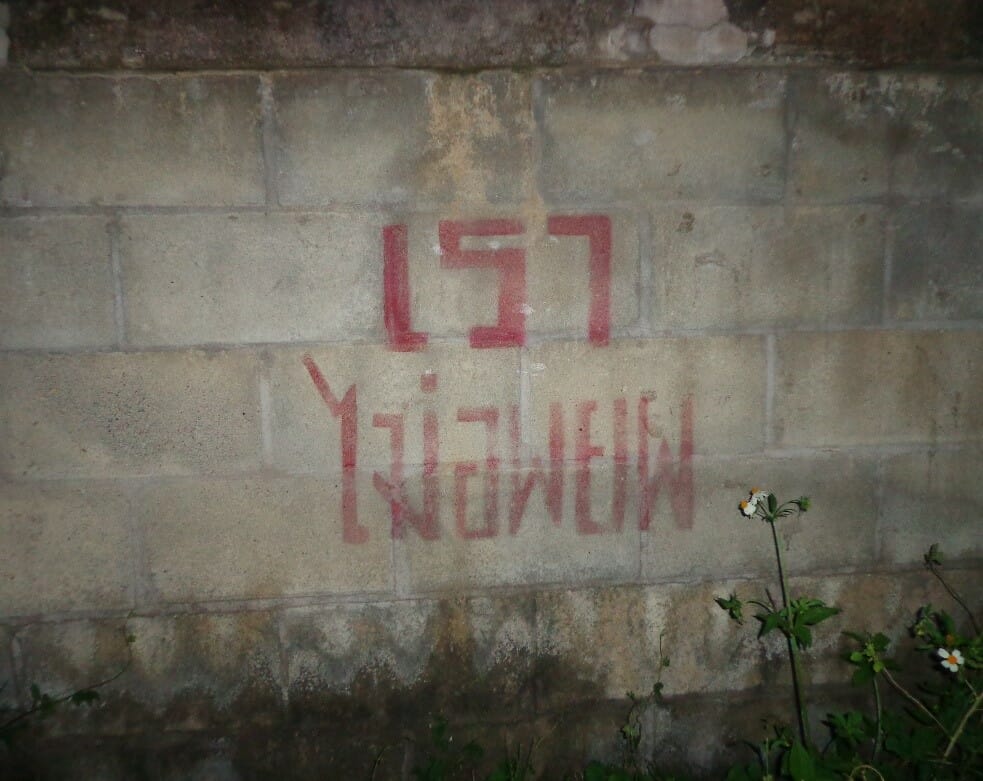
The Don Chai community maintains solidarity through slogans such as “WE will not be relocated.” (Photo by Lawi)
Weirs: A Community Solution
The latest achievement of the community was that they designed weirs – structures that span a river and alter the flow without blocking it – to replace the dams. The weirs could control the flood without the negative impacts to the community and the forest. They submitted a sample of their weirs to the government and the government approved their idea. So far, five weirs were built and they will try to finish the rest after they receive the budget from government.
The community has been successful in fighting against the dam projects for over 30 years. They also have had many challenges but they never give up because they realize that the Yom River and the forest are their life. For them there is no other place better than this place. The forest is their father and Yom River is their mother.
When the EarthRights School visited the community, we learned many lessons from the Don Chai community. They are one of the most active communities in Thailand on campaigning. If we compare this to situations in Myanmar or other countries, we see that many communities still struggle to cooperate, to access information and to build strategies to be prevent harms threatening their community. Everything that we learned from here is useful for us to apply in the future. Change may take a long time and we have to build trust within communities and commit ourselves to promoting change. Change is initiated from the bottom and brought to the top, and just the same, our strategies also need to start small and before growing big. Before creating any plan in our own communities, we have to know what the goal is and what should be handled most urgently. Before making a strong campaign, we should improve our community’s skills and mindset, building a group who truly loves their own community.
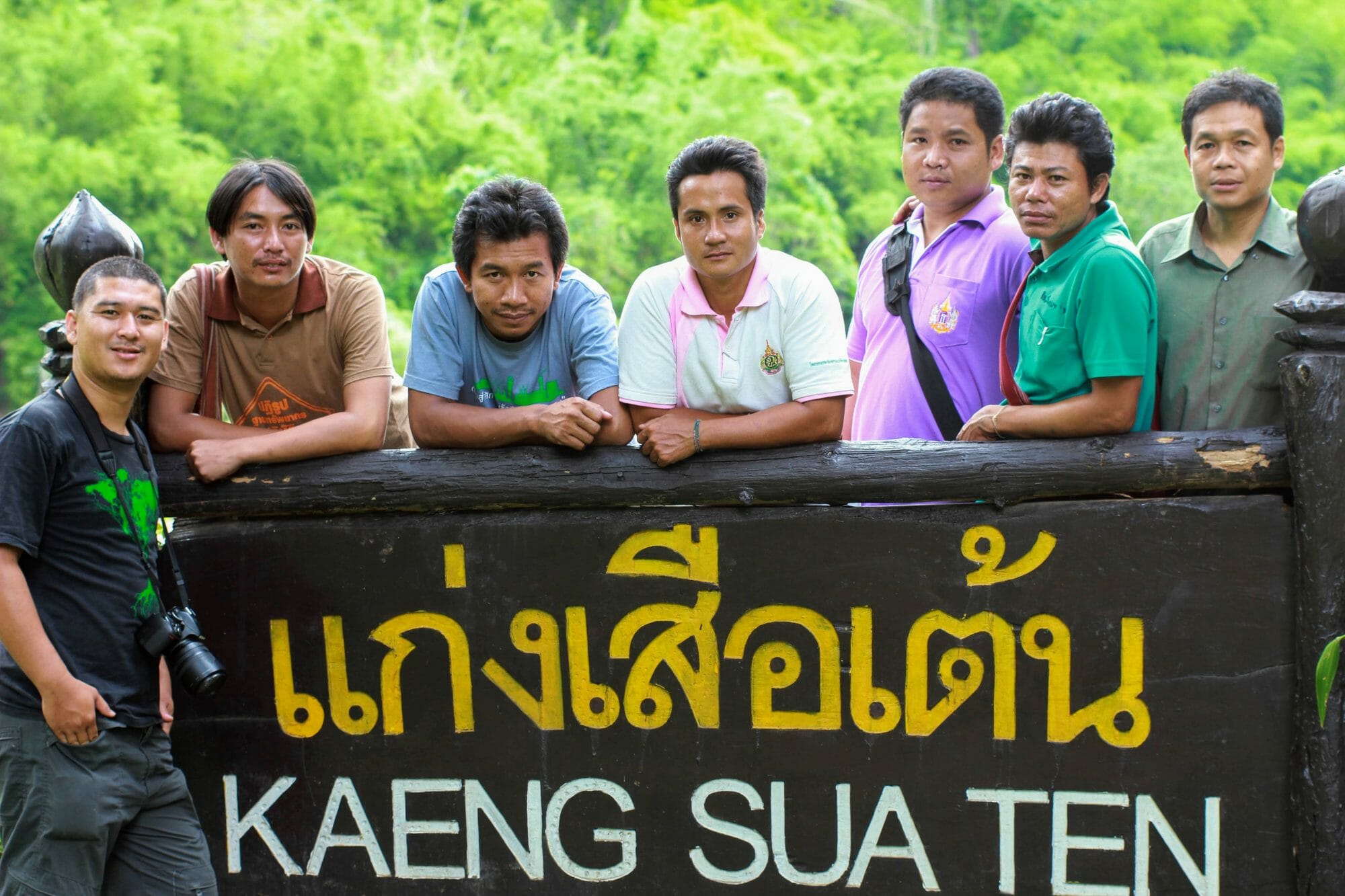
Kang Sau Ten community members pose near the entrance to their village with Neung, Mekong Legal Associate at ERI.
*Hom and Poe Htoo are graduates of the 2017 EarthRights School.
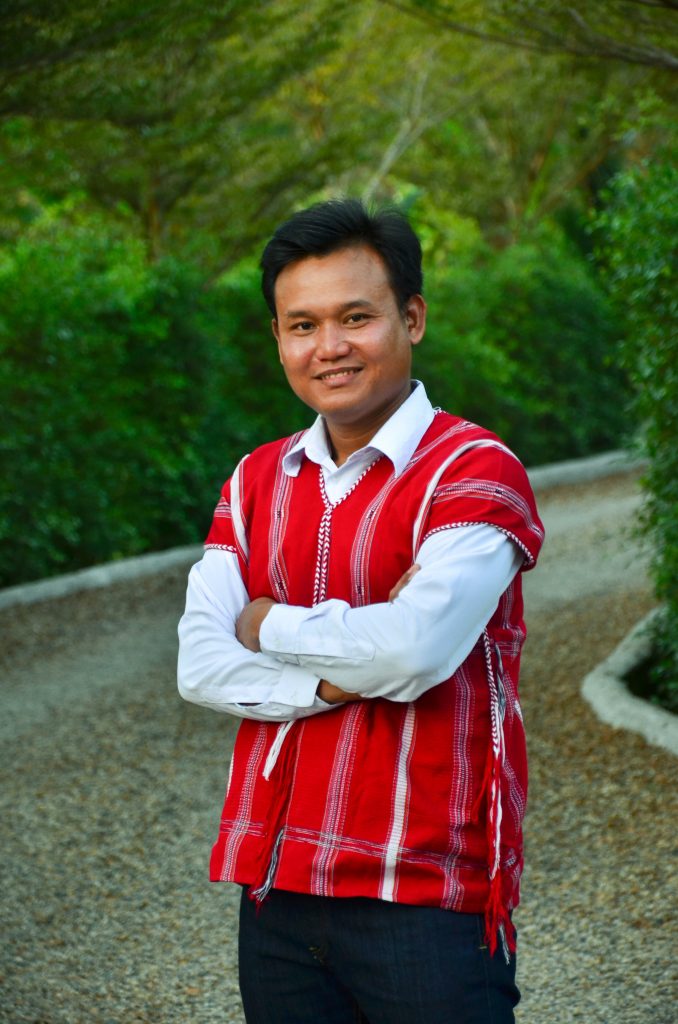
Poe Htoo, a graduate of the 2017 Earth Rights School and blog author.






